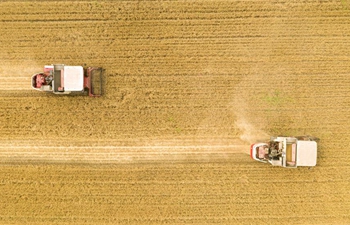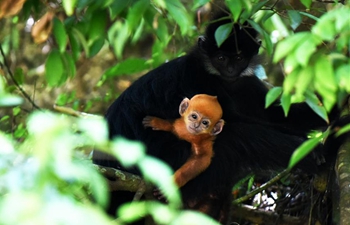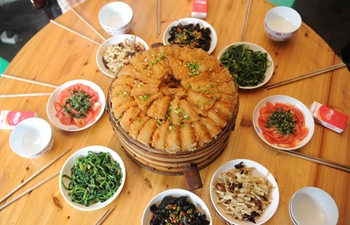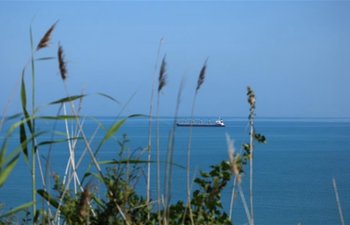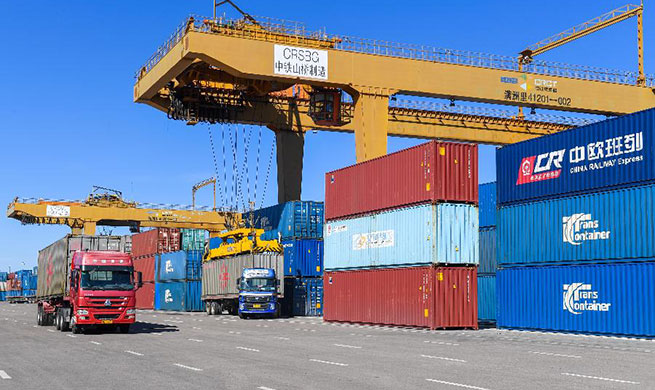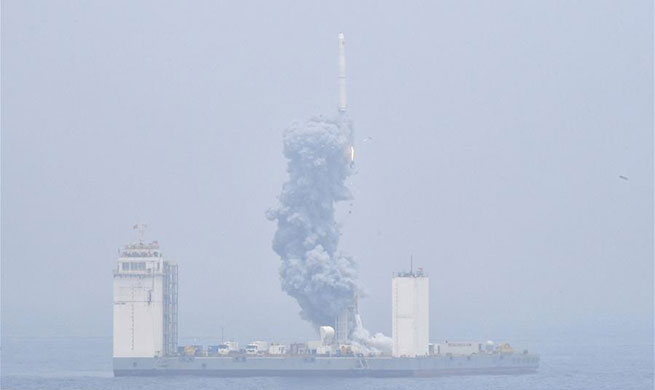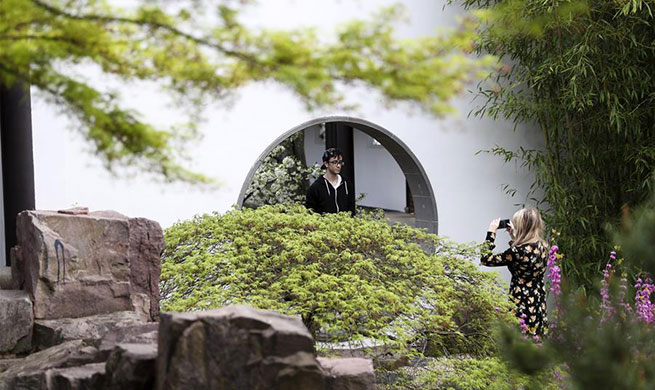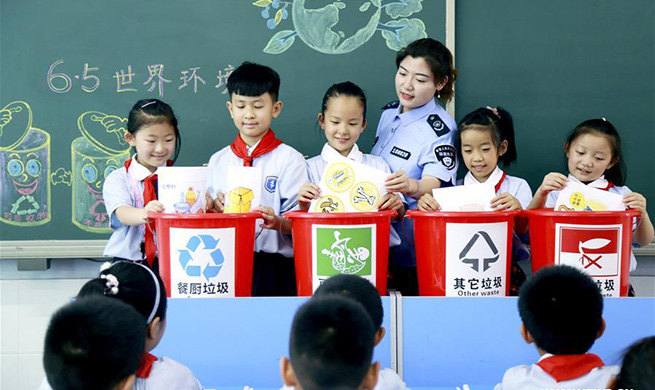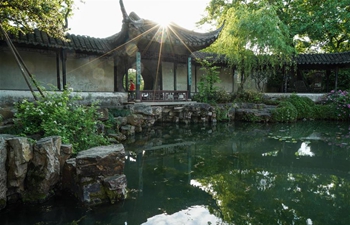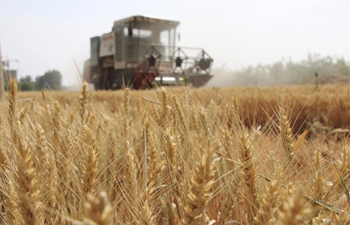TANGSHAN, Hebei Province, June 5 (Xinhua) -- Like many locals, Liu Shuxue takes a morning walk almost every day on the plastic runway flanked with tall trees at Nanhu Lake in downtown Tangshan. Yet years ago, this place was just an untreated mined-out area and a stinky garbage dump.
"The change in the urban environment is really big," said Liu, a 70-year-old retiree from a textile company, who witnessed the government's solid measures over the past decade to make the heavy-industry city turn green, clean and more livable.
The Nanhu scenic park in Lu'nan District of Tangshan, Hebei Province covers an area of 28 sq km and is free to the public. It hosted the 2016 world horticultural expo, which helped accelerate the city's tourism and cultural industry with improved infrastructure, including hotels and new sight-seeing facilities. Last year, the park received 4.8 million tourists, 1.7 times that of 2017.
Tangshan, 150 km east of Beijing, is one of the major old industrial cities, with coal, steel and ceramics among its traditional industries.
As China advances ecological progress and makes environmental protection a key aspect for the wellbeing of citizens, the city is taking unprecedented moves to treat pollution and restore the environment with hefty investment.
In July, a flower plantation project, "the Tangshan Sea of Flowers" in Kaiping District, will open to the public. With a planned investment of 13 billion yuan (1.88 billion U.S. dollars), the core zone of the project covers 11 sq km and includes the "sea of flowers," a nature museum, a zoo, and an international flower exhibition and trading center.
"Previous coal mining and small polluting factories severely damaged the environment, making the district a scar of the city which needs treatment to boost its integration with the overall city development," said Mo Chao, an official in charge of the project.
Since the project was launched last September, 87,000 trees have been planted and there has been significant progress in restoring the ecology and environment, Mo added.
In line with the country's efforts to cut excess industrial capacity, the city has slashed nearly 80 million tonnes in iron and steel production capacity since 2013, dismantled and sealed off 147 converters and furnaces, and closed small polluting factories. The number of iron and steel firms has been reduced to 38 from 58 in 2012.
"We adopt the strictest pollution control measures with standards even higher than those of some developed countries. We have realized ultra-low-emission in all production lines," said Wang Lanyu, chairman of Tangsteel.
The company is also promoting intelligent production and the reclaim and use of waste gas in the production process to save energy, he added.
Since systematic environmental treatment began in 2008, half of the premises of the Tangsteel in downtown Tangshan has been covered by trees and grass, turning it into a garden-like plant. "Tangsteel has been pursuing green transformation to realize green manufacturing," Wang said.
"You can drink coffee or tea on the platform of a furnace. There is no dust," Du Chunsheng, a fitter who retired last year from the Tangsteel plant, described the environmental improvement. In the early 1980s, mud in the plant could reach your ankles when it rained, and it was just like a dust storm when a vehicle passed by, he recalled.
Tangshan's forest coverage rate rose to 37.9 percent last year, higher than the national average of 21.66 percent. The city's average PM2.5 density fell 9.1 percent year on year to 60 micrograms per cubic meter. In the first four months of this year, the city had 78 days of excellent or good air quality, an increase of eight.
With a population of nearly 8 million, Tangshan aims to build itself into a window city for economic cooperation in Northeast Asia, a new-type industrialization base in the region encircling the Bohai Sea and an important pivot of the capital (Beijing) economic circle. Robots, new materials, high-end manufacturing like high-speed trains, and the cultural and tourism sectors provide new engines for the city's high-quality growth.
"We love the scenery as the island is tranquil, tidy and beautiful," said a tourist surnamed Fan, who came from Beijing with her friends, on the Puti (Bodhi) island, named after the 2,600 bodhi trees on it. The island is one of the three islands in the coastal area with well-protected ecology. The city aims to develop the area into an international tourist spot. The 5.07-sq-km Puti island is home to more than 400 species of wildfowl and 260 types of plants.
Liu Shuxue, a witness and participant of Tangshan's development over the past seven decades, said he hopes the city goes further in its green development path, although the environment is much better than decades ago.
This year, Tangshan will push forward with 303 key projects to bolster industrial upgrade. "We will not allow any risks to the environment and must not deviate from the green growth path," said Chen Jingming, deputy head of the municipal development and reform commission.





